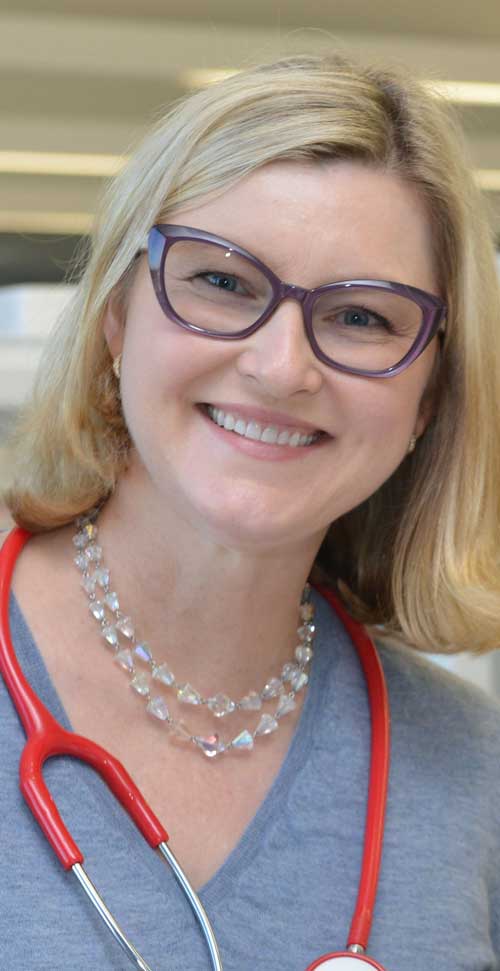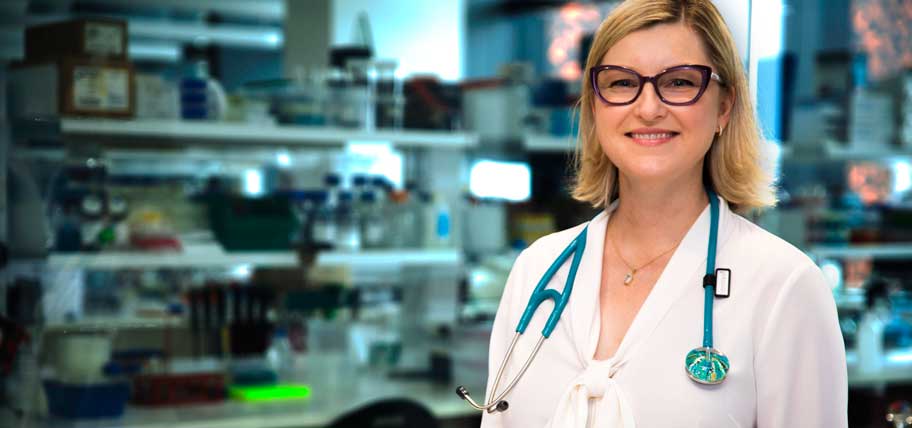Brain Tumour Awareness Month 2020: Prof Anna Nowak
Early in her career, Professor Anna Nowak treated a young woman who had just been diagnosed with the most serious type of brain cancer, a glioblastoma multiforme, or GBM. This terrible cancer has a grim prognosis. Most people diagnosed survive an average of just 15 months and the statistics have hardly improved in the past two decades.
But, as Professor Nowak remembers, this bright young woman had a couple of things in her favour – her tumour was in the frontal lobe, which is a relatively accessible section of the brain in terms of surgery. In addition, the molecular structure of her tumour was such that it was more likely to respond to treatment.
Even still, Professor Nowak would never have dared predict the young woman would defy the odds and live into her late twenties.
But fifteen years later, the young woman is a mother in her mid-thirties “with a partner, two children, a thriving career and no recurrence of her glioblastoma”.
“The idea that she would be with us almost fifteen years later without a recurrence of her GBM at that point would have been extraordinary,” Professor Nowak says now.
“We do have a handful of people who are with us after 10 years. It is never very many, but we do see those extraordinary five to ten-year survivors.”

But it is not only the survivors that Professor Nowak remembers. Hundreds of patients young and old have made an impact on her life and career, “and they are memorable for different reasons long after they are gone”.
Professor Nowak says the things she loves most about her job are the patient and family interactions and the research.
It is a real privilege seeing how extraordinary people can be, how gracious people and their families are in the face of a life-limiting illness. Those interactions are incredibly rewarding.
“Secondly, I am extremely committed to research and being able to offer that hope to patients as well.”
Professor Nowak believes that even patients with a grim prognosis can be provided hope.
“Hope for someone with an early cancer might be hoping for a cure. But with advanced brain cancer, it might be hope for freedom from discomfort, it might be hope for longer time with their family. It might be hope for the opportunity to participate in a clinical trial. There is always something for people to hope for, even when you are not dealing with a curable situation. We must take the time to learn how much information a patient wants and is ready for.”
2030 Vision
Professor Nowak predicts that personalised medicine will become increasingly important in brain cancer, with tumours to be sub-divided into molecular types and treated accordingly.
“Research is generally incremental. We get small areas of growth which build on each other. I expect to see more opportunity for tailored medicine as we understand what makes one person’s cancer grow based on molecular sequencing. Then, we will be able to personalise treatments that specifically target cancer growth in that individual. We are understanding more all the time about the particular switches that turn on some types of brain cancer.”
She believes the Australian Brain Cancer Mission announced in 2017 will be a key driver in changing outcomes.
This “incredibly positive” initiative will support research into brain cancer treatments and provide $124 million in research funding over the next 10 years.
In the long term it aims to defeat brain cancer, but in the interim, it seeks to improve quality of life, provide all patients with the opportunity to join a clinical trial and build better research capacity.
“While the major focus of this decade-long plan is on trials and treatment and research, it will also examine supportive care,” Professor Nowak says.
“We have great hope for the future, but we also have to acknowledge that even if we have no treatments to cure people, it is very worthwhile working hard to make the journey easier. Until we have all the answers, that’s what we must do.”
May 2020.
